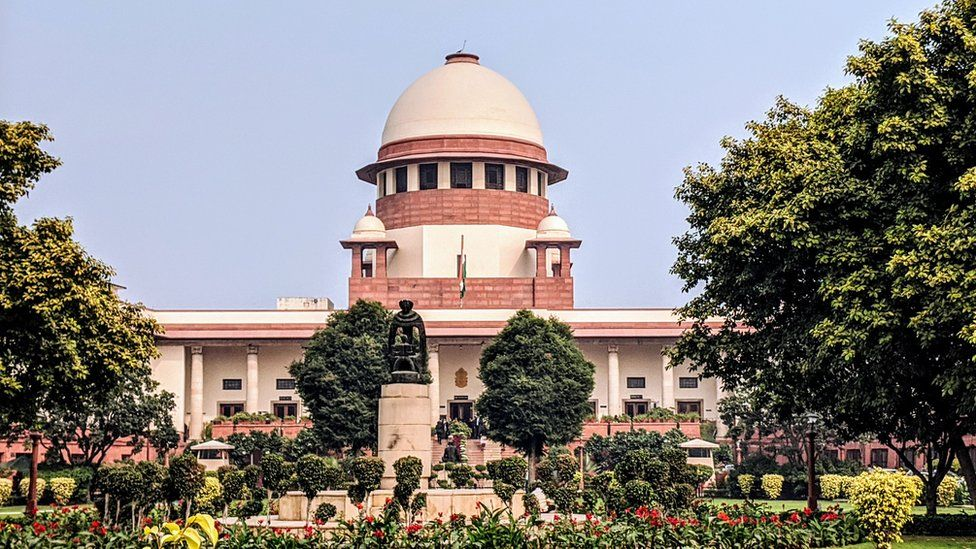Description

Copyright infringement not intended
Context: If there is internal dissatisfaction within a party, may the governor call for a floor test? The question was raised by the Supreme Court Bench while hearing the cases related to the Shiv Sena political crisis. In response, the Solicitor General of India highlighted the Supreme Court ruling in Rameshwar Prasad v/s Union of India.
Background of Rameshwar Prasad v/s Union of India case
- The Bihar state elections in February 2005 left the Legislature with a hung majority. The 243-member House of the Bihar Legislative Assembly was hung in 2005 because no party or alliance could secure the necessary 122 seats for a majority.
- After numerous consultations with political groups, the Governor of Bihar concluded that no party or coalition could win a majority in the Assembly.
- The Governor recommended President's Rule in Bihar under Article 365 in a letter to the President in March 2005. He also suggested holding the Assembly in "suspended animation" which prevented it from being dissolved but also prevented it from doing business.
- The next day, two notices were issued: one imposing President's Rule in Bihar and the other transferring the President's authority to the Governor, subject to his supreme control and supervision.
- The governor's second report to the president mentioned "serious attempts to forge together a majority" by persuading MLAs through "different measures," including bribes like posts and money. The Governor maintained his suggestion for new elections while also recommending the dissolution of the current Assembly.
- After the Bihar Assembly was dissolved, the state's several political parties organised strikes and rallies across the state.

Supreme Court in Rameshwar Prasad v/s Union of India case
- Rameshwar Prasad, who had won the Sandesh Assembly seat in the February 2005 election, as well as three other members of the dissolved House, submitted a petition to the Supreme Court to declare the Presidential Proclamation unconstitutional and to invalidate the dissolution of the Assembly.
- The Election Commission of India (ECI) announced dates for new elections (November 2005) in Bihar while the petitions before the SC were still pending. This led to a challenging circumstance.
- In October 2005, a Constitution Bench presided by the then-chief justice issued its decision. The President's Proclamation dissolving the state Legislature was overturned by the court as being unconstitutional. However, due to the forthcoming elections, the court decided against restoring the Assembly.
- The court's decision stated that "The Governor, a high-ranking constitutional official, is required to be kept out of controversies like the disqualification of members of a Legislative Assembly, and as a result, there are provisions like Article 192(2) in the Constitution providing for Governor obtaining the opinion of the Election Commission and acting according to such opinion. Article 103(2) of the Constitution contains a similar clause in relation to members of Parliament”.
- The court further stated that it could not sit by and silently observe "the subversion of the Constitution," and that even though the Governor may have been the main actor, the Union Council of Ministers should not have "quickly accepted it as absolute truth" despite the fact that it should have independently verified the facts contained in the Governor's report.
- The SC noted that the Governor had misled the Union Council of Ministers, which had resulted in the Council of Ministers offering assistance and counsel to the President, which had caused the issuance of the disputed Proclamation.
- The court dismissed the action of the Governor as "mere fiction", and said that the true intention was to "keep away a political party from asserting a claim to form the Government".
How is the present political situation in Maharashtra different from Bihar?
- The SC raised concern in March 2022 about the Maharashtra Governor's use of his authority to impose a floor test, which led to the resignation of the state's then-chief minister. The state was in turmoil as a result of the Shiv Sena's mutiny in June 2022, which saw the majority of MLAs defect to the side led by the current Chief Minister.
- A five-judge bench led by Chief Justice questioned whether the Governor might interfere by ordering a floor test in the event of internal disagreement within a party.
- In Rameshwar Prasad v. Union of India, the government was never established, but in the current case, the Maharashtra government had been in place for more than three and a half years, the solicitor general noted in reference to the 2005 judgement in Rameshwar Prasad's case.
- This also led the CJI to differentiate between the Rameshwar Prasad ruling and the current case. "Due to his arbitrary judgement, the Governor cannot reject the establishment of a new administration and overrule the will of the majority. This is a properly established government.
Must Read: https://www.iasgyan.in/daily-current-affairs/appointments-of-governors
https://www.iasgyan.in/daily-current-affairs/anti-defection-law-31
|
PRACTICE QUESTION
Q. Whether the Supreme Court Judgment in the Rameshwar Prasad v/s Union of India case can settle the political tussle in Maharashtra. Discuss
|

https://indianexpress.com/article/explained/explained-law/maharashtra-crisis-shiv-sena-rameshwar-prasad-sc-8502721/











